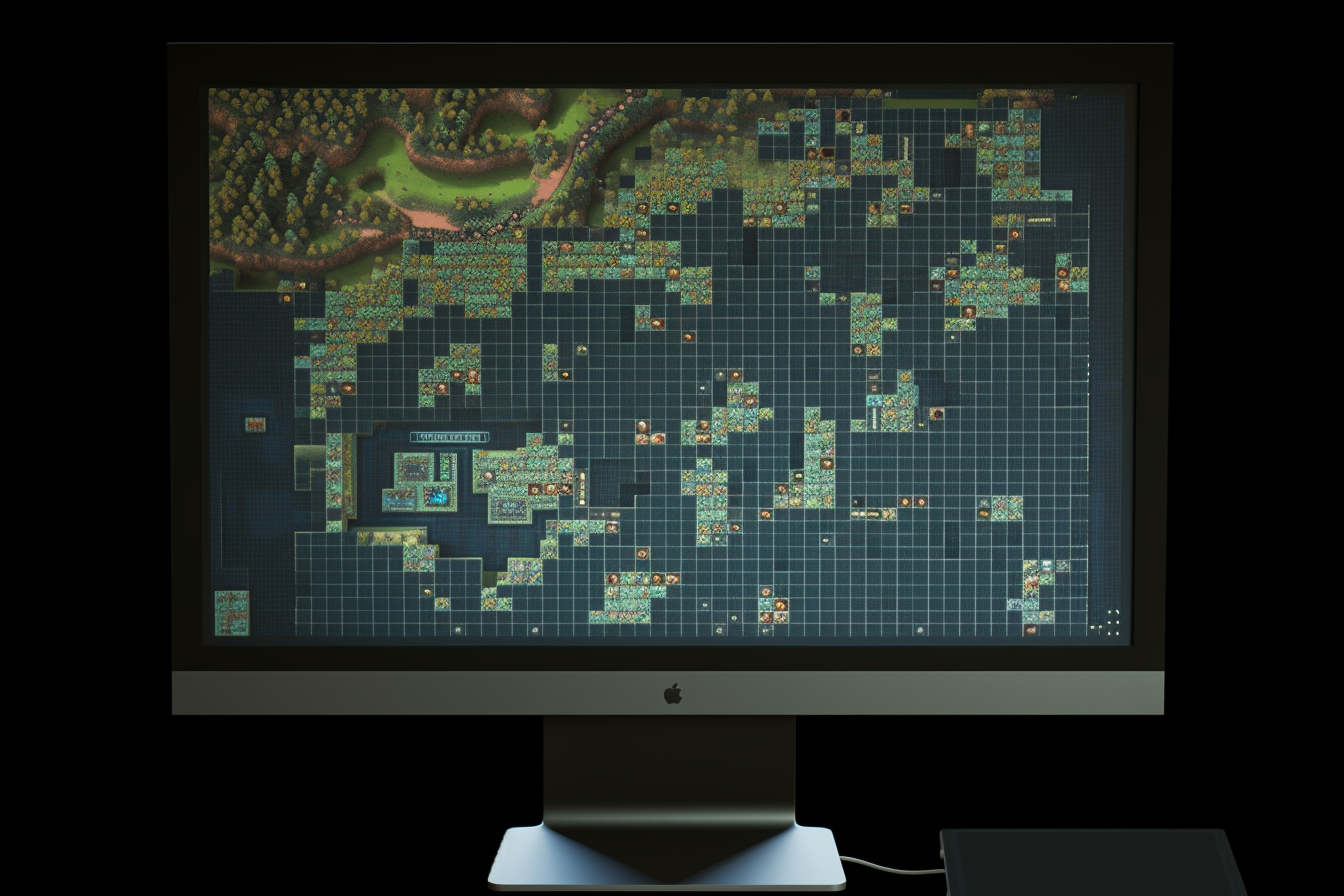As a technology columnist specializing in AI and emerging tech trends, I’m excited to introduce you to a groundbreaking approach in the world of video game design: Procedural Content Generation via Knowledge Transformation (PCG-KT). But before diving into this cutting-edge method, let’s first take a step back and understand what Procedural Content Generation (PCG) is and how it’s been typically employed.
What is Procedural Content Generation (PCG)?
In the ever-expanding universe of video games, designers are constantly seeking ways to create engaging and immersive experiences for players. One technique they use to achieve this is Procedural Content Generation (PCG). Simply put, PCG is an automated way of creating game elements like levels, characters, and objects using algorithms and mathematical models, rather than relying on manual, handcrafted design.
PCG has been used in various forms to enhance game experiences, making them more dynamic, unpredictable, and unique. Traditional PCG techniques include search-based methods, which involve exploring a vast space of possible game content, and machine learning-based approaches, where AI models learn to generate content by analyzing existing examples.
Introducing Knowledge Transformation in PCG
Now, let’s explore the new approach: Procedural Content Generation via Knowledge Transformation (PCG-KT). This innovative method goes beyond the traditional PCG techniques by focusing on transforming knowledge from one domain to another, opening up a whole new realm of possibilities in game design.
Imagine a game where the levels, characters, and gameplay elements are not just randomly generated, but instead, are crafted by combining knowledge from various game genres or even entirely different domains. This is the power of PCG-KT.
Examples of Blended Game Levels
The following images showcase examples of blended game levels generated using PCG-KT, inspired by iconic games such as Super Mario Bros., Kid Icarus, and Mega Man.
| Image | Description |
| — | — |
| 1st Row (Super Mario Bros.) | A platformer level with a mix of Mario’s signature jumping mechanics and the puzzle-solving elements from Zelda. |
| 2nd Row (Kid Icarus) | A side-scrolling shooter level that incorporates the power-ups and collectibles from Mega Man, adding a new layer of depth to the gameplay experience. |
| 3rd Row (Mega Man) | A platformer level with a blend of Mega Man’s shooting mechanics and the exploration elements from Super Mario Bros. |
The Potential of PCG-KT
PCG-KT has the potential to revolutionize the way we create and experience video games. By transforming knowledge between domains, designers can generate entirely new game worlds that blend genres, creating unique and engaging experiences for players.
For instance, imagine combining the mechanics of a classic platformer game like Mario with the lock-and-key progression of an adventure game like Zelda, resulting in a brand-new metroidvania gaming experience. This is just one example of the countless possibilities that PCG-KT unlocks.
The Future of PCG-KT: Innovative Research Directions
In their research paper, the authors emphasize the potential of PCG-KT in revolutionizing the way games are created and experienced. They outline several exciting research directions that could further enrich the field of PCG-KT.
Better Evaluation Techniques
One of the key findings from the paper is the need for better evaluation techniques to assess the quality and effectiveness of knowledge transformation in the generative process. By developing more robust and informative evaluation methods, researchers will be able to fine-tune and improve PCG-KT systems.
Extending PCG-KT Methods to Multiple Game Genres
Another promising area of research is extending PCG-KT methods to incorporate multiple game genres. While most works have focused on platformer games, the possibility of blending knowledge from different game genres opens up opportunities for generating novel gameplay experiences that could lead to entirely new game genres.
Hybrid Approaches and User-Friendly Design Tools
The authors also discuss the potential benefits of combining various models and techniques in the knowledge transformation process. By exploring hybrid approaches, researchers can discover new ways of extracting and transforming knowledge, paving the way for more versatile and innovative PCG-KT systems.
Lastly, the paper highlights the importance of developing user-friendly design tools that allow even non-experts to harness the power of PCG-KT.
Challenges and Future Directions
However, as researchers continue to push the boundaries of PCG-KT, we can expect to see a new wave of innovative and exciting gaming experiences emerge. But there are also challenges to be addressed:
- Extending the approach to multiple game genres
- Creating user-friendly design tools that allow even non-experts to harness the power of PCG



